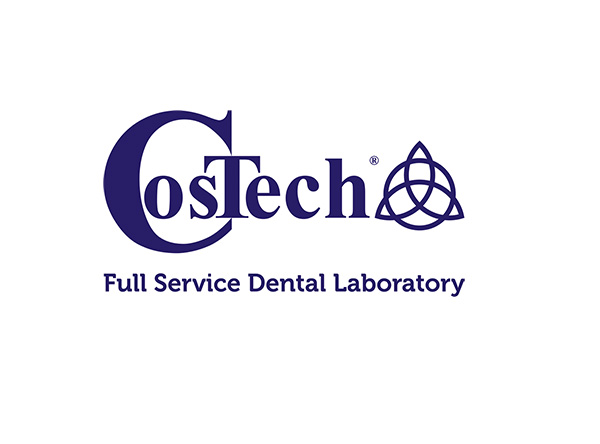When is zirconia the right choice? Neil Photay CosTech
Featured Products Promotional FeaturesPosted by: Dental Design 23rd October 2019

 In dentistry, the list of available restorative materials continues to grow exponentially. Inspired by the quest for better aesthetics or better strength and longevity, new materials are being explored through research all the time, and many of these work their way into day-to-day usage.
In dentistry, the list of available restorative materials continues to grow exponentially. Inspired by the quest for better aesthetics or better strength and longevity, new materials are being explored through research all the time, and many of these work their way into day-to-day usage.
Zirconia has been on the market for some time, but is increasing in popularity for NHS restorations. But what are the benefits of this material and is it always the best choice for restorations?
The aesthetic edge
It’s no understatement to say that aesthetics in dentistry are now a primary focus for patients and practitioners alike. What were once considered passable outcomes are now considered aesthetic failures if they do not look natural, even if they perform function correctly and can achieve appropriate longevity. Of course, this is subjective. Aesthetics will inevitably matter more in the anterior region where teeth are more on show. However, some patients will demand better aesthetics in posterior regions as well, so it’s important to establish the expectations of those you treat, and live up to them.
In light of this, zirconia has an obvious benefit. Unlike metallic or porcelain-fused-to-metal crowns (PFM) zirconia can offer wonderfully natural looking aesthetics even in challenging conditions such as changing light. Due to its atomic make up, the material echoes the appearance of natural teeth in a number of ways. Furthermore, its naturally white hue means that with careful shading it can become virtually indistinguishable from natural teeth – making it the ideal choice for high pressure aesthetic areas.
It is important to remember that not all zirconia is equal, however. Whilst zirconia as a material undoubtedly provides better aesthetics than say resins or metals, there are different varieties of the material available on the market and some will be more lifelike than others. As such, it’s worth exploring to see what level of aesthetics your patient is expecting and adjusting the zirconia you use accordingly to balance outcome with cost.
A functional fit
Traditionally, more aesthetic restorations had some functional downfalls. Some of the earlier ceramic options simply couldn’t provide comparable strength to natural teeth and many of these options have a higher fracture rate than metals when faced with occlusal forces.[i]It is for this reason that PFM crowns were first invented, as they combine the aesthetics of ceramic with the strength of metal. However, these crowns are also prone to fracture and chipping on the ceramic layer despite being stronger than most fully ceramic alternatives.[ii]
Zirconia bucks this trend in a number of ways. Due to the crystalline formation of this ceramic, the mechanical strength of the material can be up to three times stronger than other ceramic materials. Furthermore, zirconia has been proven to offer good long-term wear and to not degrade substantially over time, meaning that it is an appropriate choice for permanent restorations.[iii]Despite these benefits, however, the strength of zirconia restorations can still come up short when compared to all-metal crowns, albeit only slightly. Though zirconia is very strong, it is still able to fracture under pressure and therefore all-metal crowns may be a better choice in posterior sites where aesthetics matter less. That being said, research has proven that zirconia crowns have a 99.2% success rate in posterior locations over a long-term (7.4 year) period, meaning that they are a viable choice for crown placement in these sites.[iv]
An option for every patient?
As you can see, zirconia can easily be considered the gold standard for restorations in a wide array of cases. The use of zirconia for NHS patients is relatively new as an option, having traditionally been reserved for private patients as it is a more costly material to produce compared to metals or even PFM. However, as the boom in popularity of the material has continued, the price of zirconia is decreasing, coupled with bulk purchase of the material, making it viable for NHS patients.

CosTech Dental Laboratory has recently started offering Monolith Full-Contour Zirconia, an aesthetic, high quality full zirconia crown that is available for NHS patients. Priced at just £29.95 per unit including free delivery to and from the laboratory, these crowns can be used on any crown prep design and are available in all VITA shades A-D.
Every patient is different
Although zirconia restorations have proven their benefits in terms of strength and aesthetics, it’s still important to evaluate each case and discuss different options with your patients. There will be some cases where zirconia will not be the best option, but with Monolith Full-Contour Zirconia from CosTech, you can now provide everyone on your patient list with the option of an aesthetic and reliable solution.
For more information and to register for your Marketing pack please visit www.costech.co.uk/monolith or call 01474 320076
[i]Zhang, Y., Sailer, I., Lawn, B. Fatigue of Dental Ceramics. J Dent. 2013 Dec; 41(12): 10.1016/j.jdent.2013.10.007.
[ii]Quinn, J., Quinn, G. Fracture Toughness of Veneering Ceramics for Fused to Metal (PFM) and Zirconia Dental Restorative Materials. J Res Natl Inst Stand Technol. 2010 Sep-Oct; 115(5): 343–352.
[iii]Daou, E. The Zirconia Ceramic: Strengths and Weaknesses. Open Dent J. 2014; 8: 33–42.
[iv]Ozer, F., Mante, F., Chiche, G., Saleh, N., Takeichi, T., Blatz, M. A Retrospective Survey on Long-term Survival of Posterior Zirconia and Porcelain-fused-to-metal Crowns in Private Practice. Quintessence Int. 2014 Jan;45(1):31-8. doi: 10.3290/j.qi.a30768.










